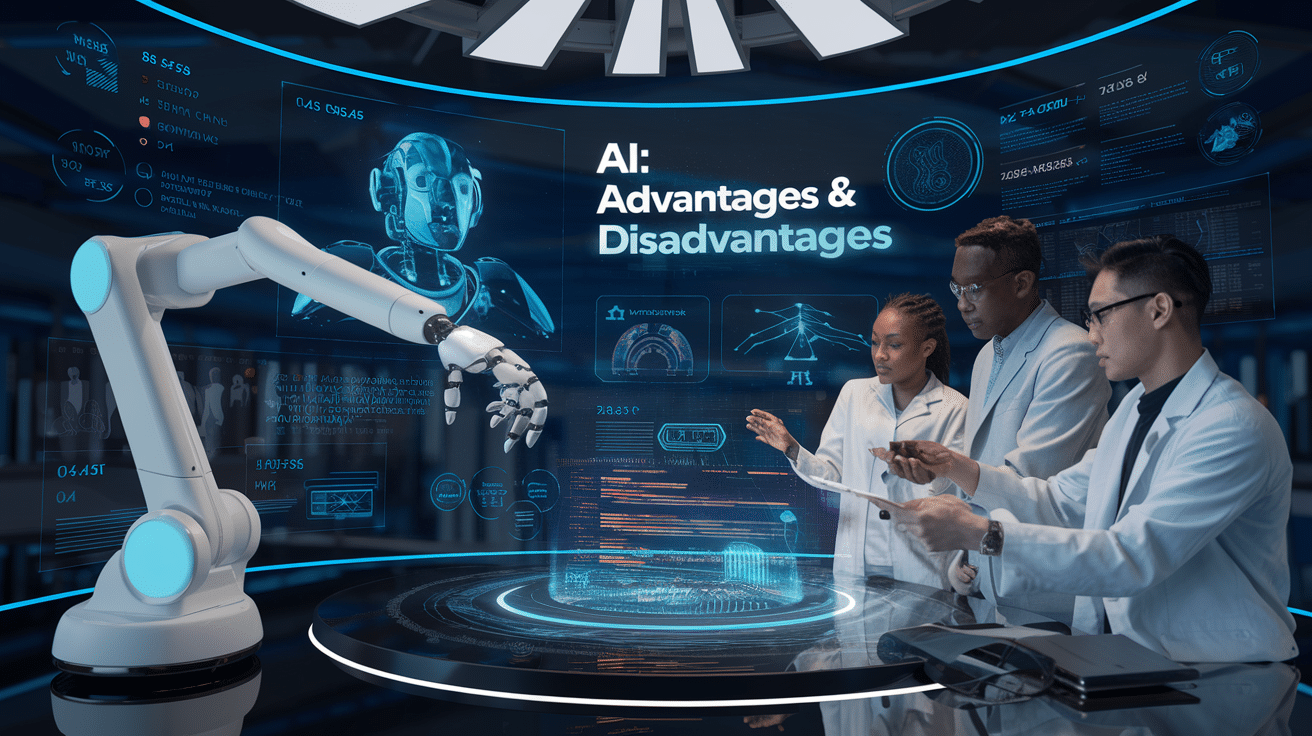Artificial Intelligence (AI) has become an integral part of our daily lives, revolutionizing industries and reshaping the way we interact with technology. From voice assistants like Siri and Alexa to self-driving cars and advanced medical diagnostics, AI’s influence is undeniable. But have you ever wondered about the journey that led us to this technological marvel?
The History of Artificial Intelligence is a fascinating tale of human ingenuity, filled with groundbreaking discoveries, setbacks, and ethical dilemmas. As we stand on the brink of a new era in technological advancement, it’s crucial to understand not only the potential benefits of AI but also its limitations and risks. This blog post will take you on a captivating journey through the evolution of artificial intelligence, exploring its advantages, disadvantages, and the profound impact it continues to have on our world.
Join us as we delve into the origins of AI, examine its various types, and uncover the ethical considerations that come with this powerful technology. We’ll also explore the exciting opportunities for those looking to build a career in AI and machine learning, and discover how different industries are harnessing its potential. By the end of this post, you’ll have a comprehensive understanding of AI’s past, present, and future, empowering you to navigate the rapidly changing landscape of technology with confidence.
Table of Contents
What is Artificial Intelligence with Examples?
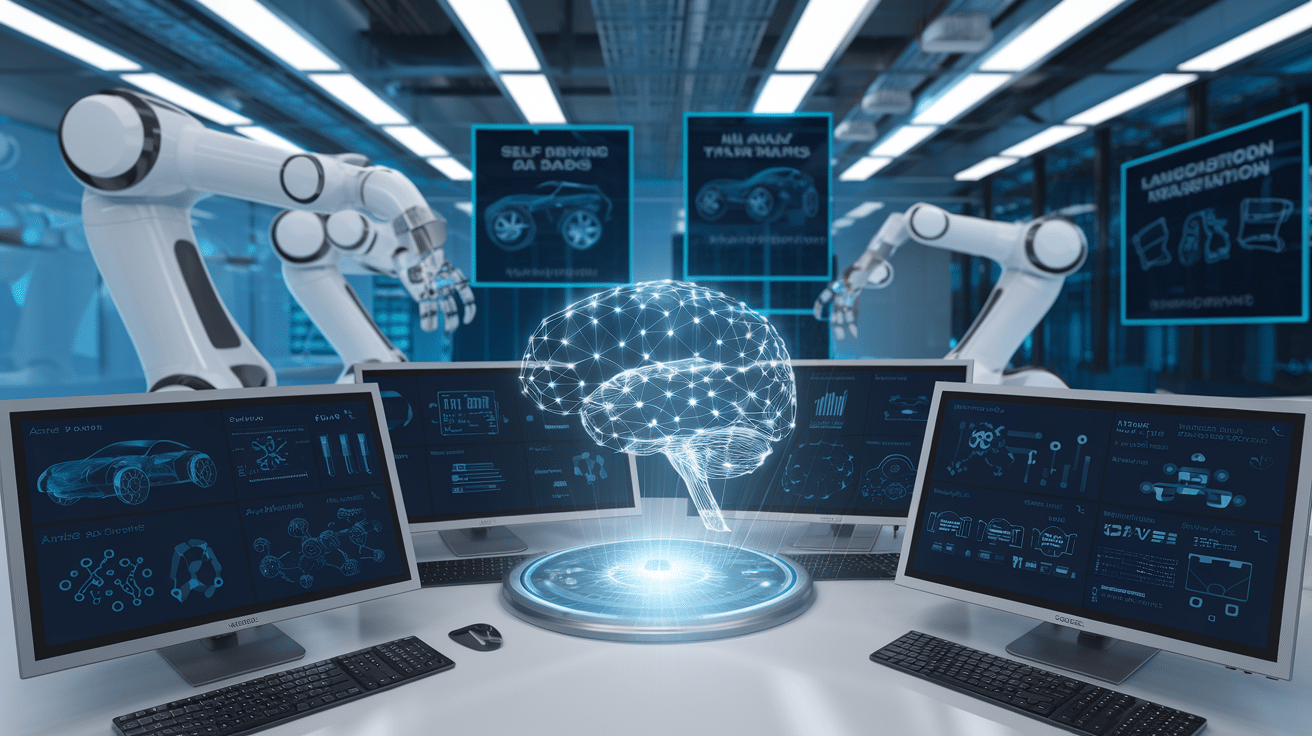
Definition of Artificial Intelligence
Artificial Intelligence (AI) refers to the simulation of human intelligence in machines programmed to think and learn like humans. It encompasses a wide range of technologies and approaches aimed at creating intelligent systems capable of performing tasks that typically require human cognition.
Key Components of AI
AI systems typically include the following components:
- Machine Learning
- Natural Language Processing
- Computer Vision
- Robotics
- Expert Systems
Examples of AI in Daily Life
AI has become increasingly prevalent in our daily lives. Here are some common examples:
| AI Application | Description |
|---|---|
| Virtual Assistants | Siri, Alexa, and Google Assistant use AI to understand and respond to voice commands |
| Recommendation Systems | Netflix and Amazon employ AI to suggest personalized content and products |
| Autonomous Vehicles | Self-driving cars use AI for navigation and decision-making |
| Facial Recognition | Social media platforms and security systems use AI for facial recognition |
| Fraud Detection | Banks and financial institutions use AI to identify suspicious transactions |
AI vs. Human Intelligence
While AI aims to mimic human intelligence, there are key differences:
- Processing Speed: AI can process vast amounts of data much faster than humans
- Consistency: AI systems perform tasks consistently without fatigue
- Adaptability: Humans are generally more adaptable to new situations
- Creativity: Human intelligence excels in creative and emotional tasks
Now that we have defined AI and explored its examples, let’s delve into its historical development.
History of Artificial Intelligence

Early Beginnings
The History of Artificial Intelligence (AI) dates back to the 1940s and 1950s. During this period, pioneering computer scientists began exploring the concept of machines that could think and learn. Key milestones include:
- 1943: Warren McCulloch and Walter Pitts create the first mathematical model of an artificial neural network
- 1950: Alan Turing proposes the Turing Test, a method for determining if a machine can exhibit intelligent behavior
- 1956: The term “Artificial Intelligence” is coined at the Dartmouth Conference
AI Winter and Renaissance
The field of AI experienced periods of intense excitement followed by disappointment and reduced funding, known as “AI winters.” However, each setback led to new approaches and breakthroughs:
| Period | Developments |
|---|---|
| 1970s-1980s | Expert systems gain popularity |
| 1980s-1990s | Machine learning algorithms advance |
| 2000s-Present | Deep learning and neural networks resurge |
Modern Era of AI
The 21st century has seen unprecedented growth in AI capabilities, driven by:
- Increased computing power
- Big data availability
- Improved algorithms
- Substantial investment from tech giants and governments
These factors have led to significant advancements in areas such as natural language processing, computer vision, and robotics. As we delve into the importance of AI, it’s clear that its historical development has set the stage for its current transformative impact across industries.
Importance of Artificial Intelligence
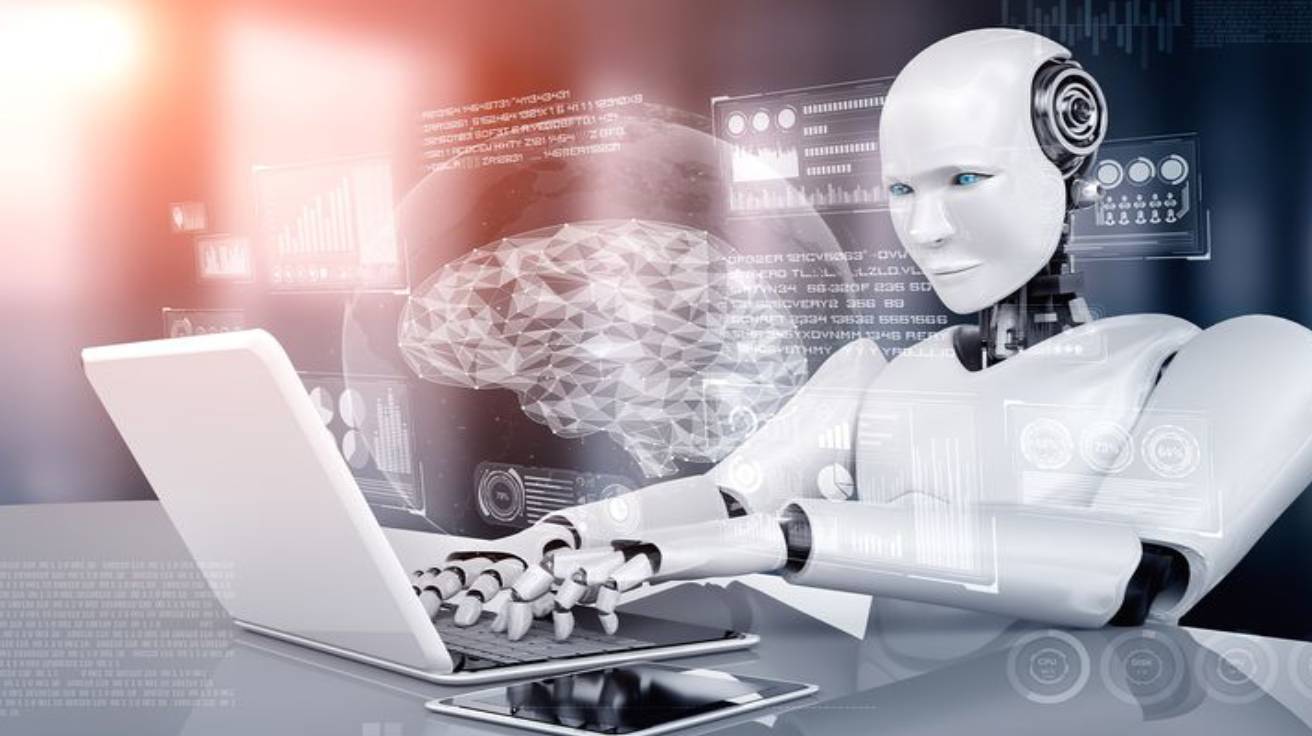
Economic Impact
Artificial Intelligence (AI) has become a significant driver of economic growth and innovation. Its impact on various industries is profound, leading to increased productivity and efficiency. Here’s a breakdown of AI’s economic importance:
- Automation of routine tasks
- Enhanced decision-making processes
- Creation of new job roles and industries
- Improved customer experiences
| Sector | AI Economic Impact |
|---|---|
| Manufacturing | 20-30% increase in productivity |
| Healthcare | $150-200 billion annual savings |
| Retail | 30% boost in sales through personalization |
| Finance | $1 trillion potential annual value |
Scientific Advancements
AI plays a crucial role in accelerating scientific research and discovery. Its ability to process vast amounts of data and identify patterns has revolutionized fields such as:
- Drug discovery and development
- Climate change modeling
- Astronomy and space exploration
- Genomics and personalized medicine
Societal Benefits
The importance of AI extends to addressing complex societal challenges:
- Improving healthcare outcomes through early disease detection
- Enhancing public safety with predictive policing and disaster response
- Advancing education through personalized learning experiences
- Supporting sustainable development goals
As we delve deeper into AI’s impact, it’s essential to understand the various types of AI systems that contribute to these advancements.
Types of Artificial Intelligence
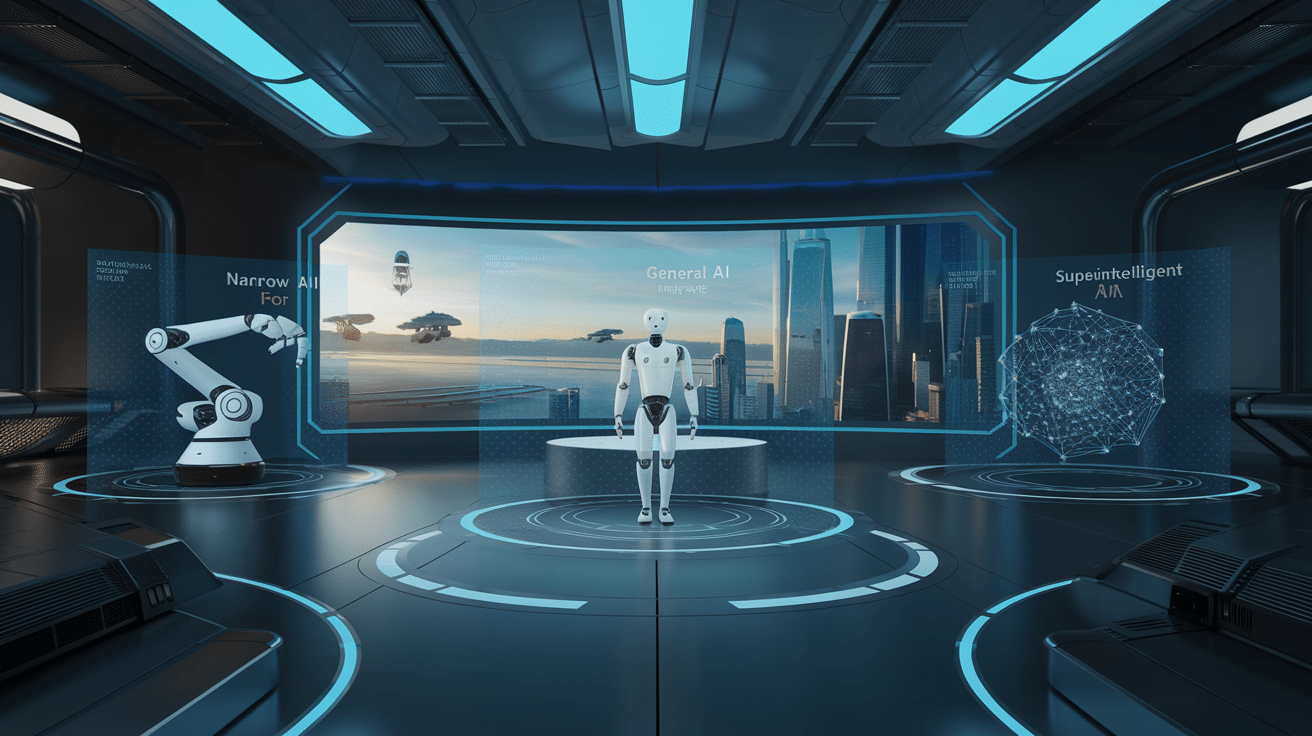
Narrow AI (Weak AI)
Narrow AI, also known as Weak AI, is designed to perform specific tasks within a limited domain. This type of AI excels at solving particular problems but lacks general intelligence. Examples include:
- Voice assistants (Siri, Alexa)
- Image recognition software
- Recommendation systems
General AI (Strong AI)
General AI, or Strong AI, refers to machines that possess human-like intelligence and can perform any intellectual task that a human can. While this type of AI remains theoretical, it represents the ultimate goal of AI research.
Artificial Superintelligence (ASI)
ASI surpasses human intelligence in all aspects, including creativity, problem-solving, and decision-making. This hypothetical form of AI could potentially lead to significant advancements in various fields.
| AI Type | Capabilities | Current Status | Examples |
|---|---|---|---|
| Narrow AI | Specific tasks | Widely used | Chess engines, chatbots |
| General AI | Human-like intelligence | Theoretical | N/A |
| ASI | Superhuman intelligence | Hypothetical | N/A |
Machine Learning
Machine Learning is a subset of AI that focuses on developing algorithms that can learn from and make predictions or decisions based on data. Key types include:
- Supervised Learning
- Unsupervised Learning
- Reinforcement Learning
Deep Learning
Deep Learning is a subset of Machine Learning that uses artificial neural networks to process complex data. It has revolutionized fields such as:
- Natural Language Processing
- Computer Vision
- Speech Recognition
Understanding these types of AI is crucial for grasping the current state and future potential of artificial intelligence. As we explore the advantages and disadvantages of AI, it’s important to consider how each type contributes to the overall landscape of this transformative technology.
What Are the Advantages of Artificial Intelligence?

Reduction in Human Error
AI systems significantly reduce human error in various fields, enhancing accuracy and reliability. Unlike humans, AI doesn’t experience fatigue or emotional fluctuations, leading to consistent performance.
Decision-Making
AI’s ability to process vast amounts of data quickly enables more informed decision-making. This advantage is particularly evident in:
- Business analytics
- Healthcare diagnostics
- Financial trading
Zero Risks
AI can be deployed in hazardous environments, eliminating risks to human life. Examples include:
- Disaster response
- Deep-sea exploration
- Space missions
24×7 Availability
Unlike humans, AI systems can operate continuously without breaks, providing:
- Round-the-clock customer service
- Continuous monitoring of critical systems
- Uninterrupted data processing
Digital Assistance
AI-powered digital assistants streamline daily tasks, improving efficiency in both personal and professional settings.
| Digital Assistant | Primary Function |
|---|---|
| Siri | Voice commands |
| Alexa | Smart home control |
| Cortana | Productivity tools |
New Inventions
AI accelerates innovation by:
- Identifying patterns in research data
- Simulating complex scenarios
- Optimizing design processes
The integration of AI across various sectors continues to drive technological advancements, reshaping industries and improving human capabilities. As AI technology evolves, its advantages in reducing errors, enhancing decision-making, and increasing efficiency become increasingly apparent.
Disadvantages of Artificial Intelligence

A. Creativity
While AI has made significant strides in various fields, it still struggles with genuine creativity. AI systems can generate content based on existing patterns and data, but they lack the human ability to think abstractly, innovate, or create truly original ideas.
B. Emotional Intelligence
AI systems are limited in their capacity to understand and respond to human emotions. This lack of emotional intelligence can lead to:
- Misinterpretation of human intent
- Inability to provide empathetic responses
- Challenges in fields requiring emotional understanding (e.g., healthcare, customer service)
C. Encouraging Human Laziness
The increasing reliance on AI technologies may lead to:
- Reduced critical thinking skills
- Decreased problem-solving abilities
- Over-dependence on automated systems
D. Privacy Concerns
AI systems often require vast amounts of data to function effectively, raising significant privacy issues:
| Concern | Impact |
|---|---|
| Data collection | Intrusive gathering of personal information |
| Data storage | Potential for data breaches and misuse |
| Data analysis | Unauthorized profiling and surveillance |
E. Job Displacement
As AI technologies advance, there is a growing concern about job displacement across various industries. While new jobs may be created, the transition period could lead to significant economic and social challenges.
F. Over-dependence on Technology
Excessive reliance on AI systems can result in:
- Reduced human skills and knowledge
- Vulnerability to system failures or cyberattacks
- Difficulty in adapting to situations where AI is unavailable
Ethical Considerations of AI

Unfair Outcomes Due to Pre-loaded Data
The ethical implications of AI systems are becoming increasingly apparent, particularly concerning biased outcomes resulting from pre-loaded data. AI algorithms can inadvertently perpetuate societal prejudices when trained on historical data that reflects past discriminatory practices. This issue is particularly prevalent in:
- Hiring processes
- Criminal justice systems
- Loan approval algorithms
- Healthcare diagnostics
To address this concern, developers must carefully curate training data and implement rigorous testing protocols to identify and mitigate potential biases.
Transparency and Accountability
As AI systems become more complex and influential, the need for transparency and accountability grows. Key considerations include:
| Aspect | Importance | Challenge |
|---|---|---|
| Explainable AI | Crucial for trust | Difficult with complex algorithms |
| Audit trails | Ensures accountability | Requires robust documentation |
| Regulatory frameworks | Guides ethical development | Needs to keep pace with technology |
Organizations must prioritize these aspects to ensure responsible AI development and deployment.
Security Concerns
The integration of AI in critical systems raises significant security concerns. Potential vulnerabilities include:
- Data breaches exposing sensitive information
- Adversarial attacks manipulating AI decision-making
- AI-powered cyber attacks
- Unauthorized access to AI systems
To mitigate these risks, robust security measures and continuous monitoring are essential. Additionally, ethical guidelines should address the responsible use of AI in security-sensitive applications.
As AI continues to evolve, addressing these ethical considerations becomes paramount. The next section will explore how professionals can prepare for the AI-driven future and contribute to its responsible development.
Become an AI & Machine Learning Professional
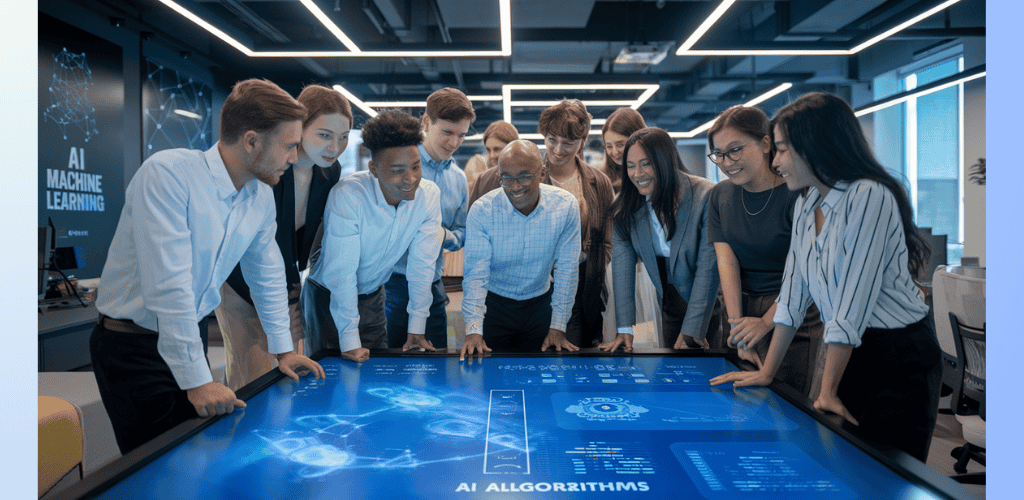
Autonomy and Control
As AI systems become more advanced, the question of autonomy and control becomes increasingly important. AI professionals must grapple with the balance between allowing AI to make autonomous decisions and maintaining human oversight. This delicate equilibrium is crucial in various fields, from self-driving cars to automated financial trading systems.
| Aspect | Autonomous AI | Human-Controlled AI |
|---|---|---|
| Decision Speed | Faster | Slower |
| Adaptability | High | Limited |
| Ethical Considerations | Challenging | More manageable |
| Accountability | Unclear | Clear |
Impact on Employment
The rise of AI and machine learning is reshaping the job market. While some jobs may become obsolete, new opportunities are emerging for those skilled in AI technologies. To become an AI and machine learning professional, one must:
- Develop a strong foundation in mathematics and statistics
- Learn programming languages like Python and R
- Gain expertise in machine learning algorithms and neural networks
- Understand data analysis and visualization techniques
Use of AI in Warfare
AI’s application in military contexts raises significant ethical concerns. AI professionals working in this field must consider:
- Autonomous weapons systems
- Predictive analytics for strategic planning
- Cybersecurity and defense systems
- Drone technology and surveillance
Moral Agency and Responsibility
As AI systems become more complex, questions of moral agency and responsibility arise. AI professionals must address:
- The extent to which AI can be held responsible for its actions
- The role of human oversight in AI decision-making processes
- Ethical frameworks for AI development and deployment
- Potential legal implications of AI-driven decisions
Use of AI in Other Industries

Now that we’ve explored the various aspects of AI, let’s examine its practical applications across different industries.
Healthcare
AI is revolutionizing healthcare through:
- Predictive diagnostics
- Personalized treatment plans
- Drug discovery acceleration
| AI Application | Benefits |
|---|---|
| Medical imaging analysis | Faster, more accurate diagnoses |
| Robot-assisted surgery | Enhanced precision and reduced recovery time |
| Virtual health assistants | Improved patient engagement and care management |
Finance
In the financial sector, AI is transforming:
- Risk assessment
- Fraud detection
- Algorithmic trading
Retail
AI is reshaping the retail landscape by enabling:
- Personalized shopping experiences
- Inventory optimization
- Predictive demand forecasting
Transportation
The transportation industry benefits from AI through:
- Autonomous vehicles
- Traffic management systems
- Predictive maintenance
Manufacturing
AI enhances manufacturing processes with:
- Quality control automation
- Supply chain optimization
- Predictive equipment maintenance
Education
In education, AI facilitates:
- Personalized learning experiences
- Automated grading systems
- Intelligent tutoring systems
Entertainment
The entertainment industry leverages AI for:
- Content recommendation algorithms
- Virtual and augmented reality experiences
- Automated content creation
These applications demonstrate the versatility of AI across various sectors, highlighting its potential to revolutionize industries and improve efficiency, accuracy, and user experiences.
Conclusion
As we reflect on the journey through the history, types, advantages, and disadvantages of Artificial Intelligence, it’s clear that AI has become an integral part of our technological landscape. This transformative technology has revolutionized various industries and continues to shape our future in profound ways.
Key takeaways from our exploration:
- AI’s evolution: From concept to reality
- Diverse applications across industries
- Significant advantages in efficiency and innovation
- Potential drawbacks and ethical considerations
To summarize the impact of AI:
| Aspect | Positive Impact | Challenges |
|---|---|---|
| Efficiency | Automation of repetitive tasks | Potential job displacement |
| Innovation | Breakthroughs in research and development | Ethical concerns in decision-making |
| Quality of Life | Improved healthcare and personalized services | Privacy and data security issues |
| Economic Growth | New business opportunities and industries | Economic disparities and AI divide |
As AI continues to advance, it’s crucial to strike a balance between harnessing its potential and addressing its challenges. The future of AI depends on responsible development, ethical considerations, and collaborative efforts to ensure its benefits are accessible to all while mitigating potential risks.
FAQs
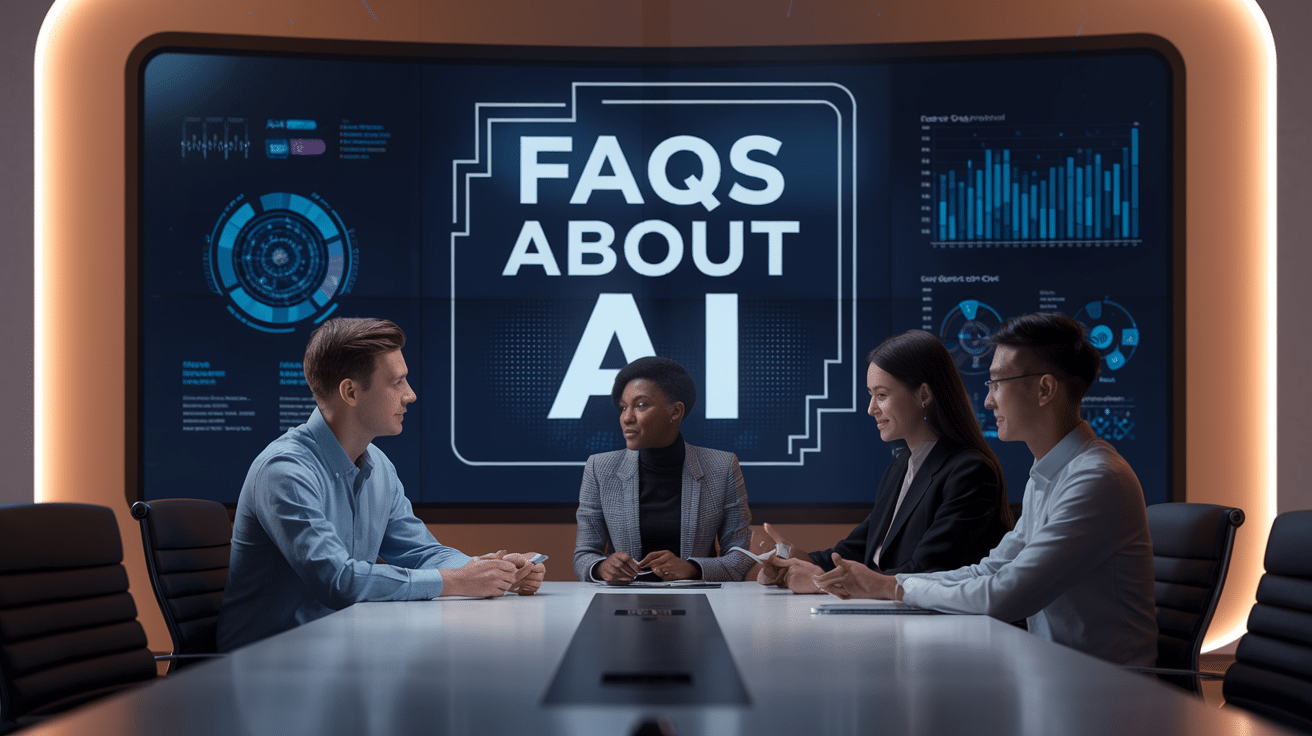
A. What Are the Benefits of Artificial Intelligence (AI)?
AI offers numerous advantages across various sectors:
- Increased efficiency and productivity
- Enhanced accuracy and reduced errors
- 24/7 availability
- Data analysis and insights
- Personalization and improved user experiences
B. What Are the Disadvantages of Artificial Intelligence (AI)?
Despite its benefits, AI also has potential drawbacks:
- Job displacement concerns
- High implementation costs
- Lack of human judgment in complex situations
- Privacy and security risks
- Potential for bias in decision-making
C. How Can Businesses Benefit From Adopting AI?
Businesses can leverage AI in multiple ways:
| Benefit | Description |
|---|---|
| Automation | Streamline repetitive tasks |
| Customer Service | Implement chatbots and virtual assistants |
| Data Analysis | Gain insights from large datasets |
| Predictive Maintenance | Anticipate equipment failures |
| Personalization | Tailor products and services to customers |
D. What Are Some AI Applications in Everyday Life?
AI has become ubiquitous in daily activities:
- Virtual assistants (e.g., Siri, Alexa)
- Recommendation systems on streaming platforms
- Spam filters in email services
- Navigation apps with real-time traffic updates
- Smart home devices
E. What Are the Advantages of AI in Education?
AI is transforming the educational landscape by:
- Providing personalized learning experiences
- Automating administrative tasks
- Offering intelligent tutoring systems
- Enhancing accessibility for students with disabilities
- Facilitating data-driven decision-making for educators
Recommended Reads
Books on AI History and Development
- “The Quest for Artificial Intelligence” by Nils J. Nilsson
- “Artificial Intelligence: A Modern Approach” by Stuart Russell and Peter Norvig
- “The Master Algorithm” by Pedro Domingos
AI Ethics and Society
- “Human Compatible” by Stuart Russell
- “Weapons of Math Destruction” by Cathy O’Neil
- “AI Ethics” by Mark Coeckelbergh
AI Applications and Future Prospects
- “The Singularity Is Near” by Ray Kurzweil
- “Life 3.0” by Max Tegmark
- “AI Superpowers” by Kai-Fu Lee
| Category | Book Title | Author | Key Focus |
|---|---|---|---|
| History | The Quest for Artificial Intelligence | Nils J. Nilsson | Comprehensive AI history |
| Ethics | Human Compatible | Stuart Russell | AI alignment with human values |
| Future | The Singularity Is Near | Ray Kurzweil | AI’s potential impact on society |
These recommended reads offer a comprehensive understanding of artificial intelligence, covering its history, ethical implications, and potential future developments. From foundational texts like “Artificial Intelligence: A Modern Approach” to thought-provoking works on AI ethics such as “Weapons of Math Destruction,” these books provide valuable insights into the multifaceted world of AI. For those interested in the future of AI and its societal impact, “Life 3.0” and “AI Superpowers” offer compelling perspectives on the transformative potential of this technology.
Artificial Intelligence has undoubtedly revolutionized various aspects of our lives, from simplifying daily tasks to transforming entire industries. As explored throughout this blog post, AI’s journey from its inception to its current state has been marked by significant milestones and breakthroughs. The advantages of AI, including increased efficiency, accuracy, and the ability to process vast amounts of data, have propelled its adoption across multiple sectors. However, it is crucial to acknowledge and address the potential drawbacks, such as job displacement and privacy concerns, to ensure responsible development and implementation of AI technologies.
As AI continues to evolve, it is imperative for individuals and organizations to stay informed about its capabilities, limitations, and ethical implications. By understanding the various types of AI and their applications in different industries, we can better harness its potential while mitigating risks. Embracing AI education and upskilling opportunities will be key to navigating the rapidly changing landscape of technology and preparing for the future of work. As we move forward, a balanced approach that leverages the benefits of AI while addressing its challenges will be essential for creating a more innovative and equitable society.

